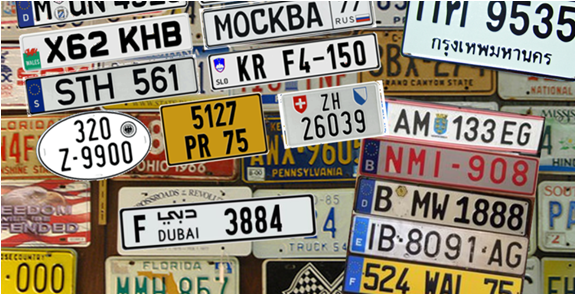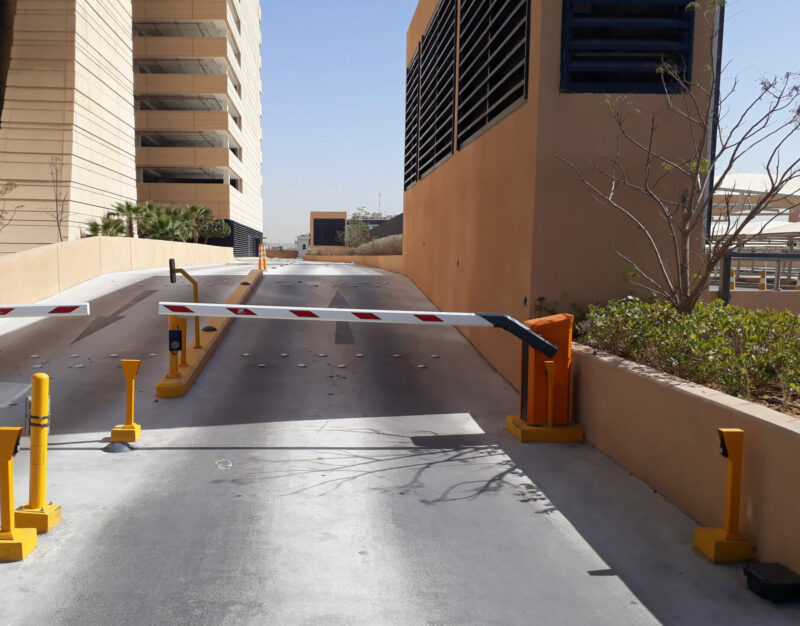In our fast-paced and ever-changing world, technology plays a pivotal role in shaping the landscape of security and access control. Long-Range Radio-Frequency Identification (RFID) and Automatic Number Plate Recognition (ANPR) stand out as prominent solutions making significant strides across diverse industries. This article aims to provide a comprehensive exploration of long-range RFID and ANPR technologies, offering insights into their respective functionalities, strengths, and limitations. By the conclusion, you will be better positioned to make a well-informed decision on the solution that aligns most effectively with your specific needs.
What is long-range RFID?
Long-range Radio-Frequency Identification (RFID) is a technology that uses radio waves to identify and track objects, including vehicles, within a certain range. In the context of access control and security, long-range RFID involves attaching RFID tags or transponders to vehicles. These tags emit unique identification signals, and RFID readers are placed strategically to capture these signals as vehicles approach or depart from a location. Long-range RFID is used in applications such as parking management, gate control, and asset tracking.
What is ANPR?
Automatic Number Plate Recognition (ANPR), also known as License Plate Recognition (LPR), is a technology that uses cameras and optical character recognition to read and record vehicle license plates. It captures and deciphers the characters on license plates, allowing for the identification of vehicles entering or exiting a premises. ANPR systems are widely used for various applications, including parking management, access control, toll collection, and law enforcement.
Comparison Long-range RFID vs. ANPR
To assist you in making an informed decision between ANPR and Long-Range RFID, let’s delve into a detailed comparison table. This table will provide a side-by-side evaluation of these two technologies, highlighting key features and differences.
Technology |
|
| Long-range RFID | ANPR |
| Utilizes RFID technology, using a combination of UHF and microwave frequencies with a read range up to 15 meters. | Contains optical character recognition within a camera with infrared functionality, with a read range up to 10 meters. |
Identification mechanism |
|
| Long-range RFID | ANPR |
| Utilizes unique RFID tags affixed to vehicles, transmitting data wirelessly to RFID readers. Swift identification, minimal dependence on visual conditions, and resistance to wear and tear. | Analyzes license plate information captured by cameras, converting a visual image into alphanumeric characters. No need for physical tags on vehicles, suitable for diverse vehicle types where a front image of the plate can be captured. |
Accuracy |
|
| Long-range RFID | ANPR |
| Accuracy is 100% guaranteed as long as there is an unobstructed line of sight between the tag and the reader within the reading distance. | The accuracy depends on image quality: reflections, dirt, snow, hail, lighting or difficult angles can lead to interpretation errors. |
Cost |
|
| Long-range RFID | ANPR |
| A more secure and sensitive RFID reader usually means a higher price. RFID tags have to be re-purchased over time. Generally low maintenance costs, as RFID tags are durable and have a long lifespan. | The ANPR camera is more expensive compared to RFID but a one-time investment; in the long run, money is saved because there is no extra cost for tags. Regular maintenance required to ensure camera functionality and software updates. |
Security |
|
| Long-range RFID | ANPR |
| Relies on secure communication protocols and is fortified with the latest security standards, including OSDP. Furthermore, the communication between the tags and readers is entirely secured, with options to do tag authentication to prevent unauthorized access. | The communication between the ANPR system and the access control platform can be fortified using the latest security standards, such as OSDP, to safeguard against potential threats. However, license plate information lacks adequate security measures. |
Application |
|
| Long-range RFID | ANPR |
| RFID is the ideal solution for achieving high-security levels and enhancing convenience for fixed, authorized users as it makes use of tags. | ANPR excels as a solution that offers convenience and adaptability for various users, making it ideal for applications where a diverse range of individuals and vehicles, whether temporarily or incidentally, require efficient access. |
What’s the best choice?
The decision between Long-Range RFID and ANPR for vehicle access control depends on the particular demands of the application. Long-range RFID excels in rapid and reliable identification, whereas ANPR provides a tag-free solution, adept at capturing a wide range of license plate information. A thorough understanding of the intricacies of each technology is vital for making an informed decision, taking into account factors like range, speed, environmental adaptability, cost, and security considerations.
We support you in making the right choice
In your journey to find the ideal vehicle access control solution, trust Nedap – your partner in vehicle access control. With an extensive product portfolio encompassing diverse long-range RFID, UHF readers and tags, and cutting-edge ANPR cameras, we offer tailored solutions for your gate and vehicle access needs. As a market leader with over 30 years of experience in automatic vehicle and driver identification, Nedap is committed in supporting you in making the right choice.
To discover the solution that perfectly aligns with your requirements, discover our solutions and product portfolio.
Do you need some support in making the right choice for your application? Feel free to reach out to us by filling in the form below.


